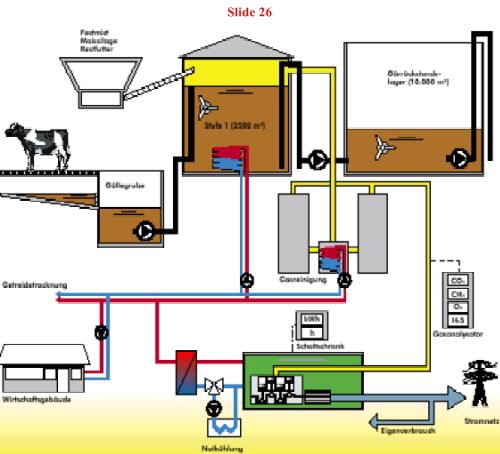

Connecting to the Gr Building the Biodigester Hestia biodigesters are approximately 5 by 7 feet wide by 5 feet deep, providing about gallons of capacity. For aesthetics, Warren wraps the exterior of the biodigester in chicken wire and then stuccos it. The project can be broken down into excavation and concrete plumbing and gas piping and external masonry. The gas line is attached to nad regular barbed fitting secured with a hose clamp. Home biogas system (Philippine BioDigesters) The rubber membrane is sandwiched between two washers and nuts on the threaded end of the fitting. Burying the PVC line protects it from photodegradation and developing cracks that could lead to gas leaks.Ī concrete truck with a pump is best to fill the forms in one pour. Time will vary from several weekends to several days, separated by a seven-day concrete-curing period. There was a problem providing the content you requested After excavation comes building the wall forms for the 2 cubic yards of aggregate-free concrete, which must be poured all at once to avoid leaks through the walls. The second coat is thicker like peanut butterwith a higher ratio of Portland desigb. The design is straightforward: Hestia biodigesters are approximately 5 by 7 feet wide by 5 feet deep, providing about gallons of capacity. The first is a bonding coat of watery-thin consistency. When this occurs, the gas line must be picked up and the water drained back into the digester. If the climate is mild, it may be enough to build a hoop house xnd the tank to keep the slurry sufficiently warm in winter. Final Draft (edited by Steve Crowe).Ī stucco and brick facade helps the digester integrate with the garden landscape. BUILD MANUAL: ARTI FLOATING DOME BIODIGESTOR. SCHOOL OF MECHANICAL ENGINEERING Project The Design and Build of a Biodigester. The Design and Build of Biodigester Toilet. To develop a mathematical equation for the design of a biogas digester.T Technology > TA Engineering (General).Design and fabrication of a biogas digester system. Item Type:Įngineering design, Biogas, Renewable energy sources The rate of biogas production also depends on the ambient temperature of a particular region. Therefore, for efficient performance of a biogas plant, it is necessary to regulate all the factors suitably. The efficiency of anaerobic digestion essentially depends on intensity of bacterial activity, which is influenced by several factors such as ambient temperature, temperature of digester material, loading rate, retention time, pH value of digester content etc. In essence, a biogas digester involves anaerobic fermentation process in which different groups of bacteria act upon complex organic materials in the absence of air to produce biogas. Further, with an increase in the cost of petroleum products, biogas can be an effective alternative source of energy for cooking, lighting, food processing, irrigation and several other requirements. Utilization of biogas has gained importance in recent years, mainly due to the availability of cheap raw materials and environmental compatibility. Biogas, a clean and renewable form of energy could very well substitute (especially in the rural sector) for conventional sources of energy (fossil fuels, oil, etc.) which are causing ecological–environmental problems and at the same time depleting at a faster rate. The fabrication of lab size digester was done by using 200 litres barrel. The specifications for the design will meet the type and specifications of the diesel engine that will run the generator. The digester that uses floating roof will produces constant pressure biogas. The objective of this project is to design a biogas digester that can produces biogas with specific flow rate. This project deals with designing and fabricating a biogas digester which is focusing on Indian type.


 0 kommentar(er)
0 kommentar(er)
